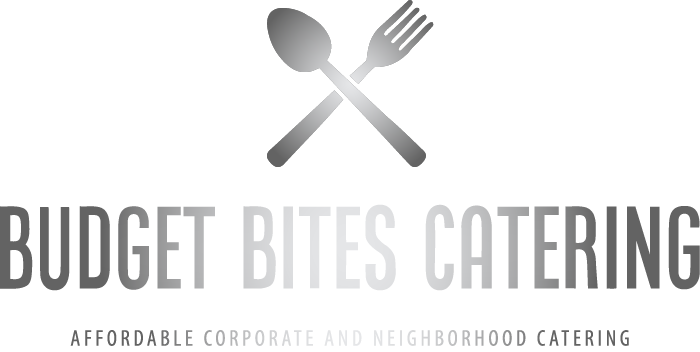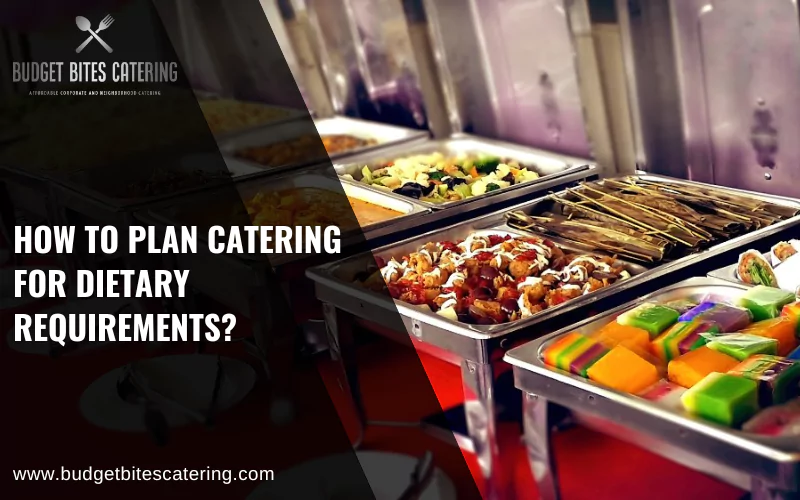Let’s say you’re planning an event, and everything is set; except for the menu and catering. You’re unsure about your guests’ special dietary requirements. How will you manage? How will you plan the menu?
Don’t worry! In this blog, we’ll address all these questions and clear up any confusion. We’ll guide you through a comprehensive 6-step strategy to plan catering for dietary requirements, ensuring you create a memorable event for both you and your guests. Let’s hop on!
6-Step Strategy to Plan Catering for Dietary Requirements
1. Identify Dietary Needs
Understanding your guests’ dietary needs is the first step in planning catering. Start by sending out a survey with follow-up requests to gather information on any dietary restrictions, allergies, or preferences.
This information will help avoid potential health risks and ensure that everyone can enjoy the event. Group the responses into categories such as vegetarian, vegan, gluten-free, and lactose-free to simplify menu planning.
2. Provide Clear Instructions to Caterers
Once you have identified dietary needs, communicate them clearly to the catering team. Provide detailed instructions about the specific requirements, including how to handle allergens and cross-contamination.
Ensure the caterer understands the importance of these needs to avoid any mistakes that could lead to health issues or dissatisfaction among guests.
3. Menu Customization
Collaborate with your caterer to create a menu that accommodates all identified dietary requirements. Ensure that there are diverse options available, including alternatives for common restrictions like vegetarian, vegan, gluten-free, and lactose-free diets. Customizing the menu helps ensure all guests have suitable and enjoyable options without feeling left out.
4. Cross-Contamination Prevention
Preventing cross-contamination is crucial, especially for guests with severe allergies. Ensure that the caterer uses separate preparation areas, utensils, and cookware for different dietary needs.
Make sure they follow strict protocols to avoid accidental mixing of ingredients, which could result in serious health risks for some guests.
5. Label the Food
Accurate labeling provides guests with the information they need to make safe food choices, nurturing trust, and ensuring they can enjoy the meal without concerns. Here are some examples of labels:
- Vegetarian: Avoids meat, fish, and poultry but may consume dairy and eggs.
- Vegan: Excludes all animal products, including meat, dairy, eggs, and often honey.
- Gluten-Free: Eliminates gluten, found in wheat, barley, and rye, to prevent adverse reactions.
- Lactose-Free: Avoids dairy products containing lactose due to intolerance or sensitivity.
6. Keep Checking for Guests
Even after the initial survey, stay in touch with guests to confirm their dietary needs, as these can change. Make sure to check with them closer to the event to address any last-minute requirements. This ongoing communication ensures that all needs are up-to-date and adequately catered for. Make sure you select a caterer who is adaptable and can handle last-minute changes or special requests!
Let us Help you Create a Personalized Menu for your Event
Planning catering for diverse dietary requirements is crucial to ensuring that all guests feel included and safe. By identifying specific needs like vegetarian, vegan, gluten-free, and lactose-free, and implementing strategies like clear communication, menu customization, and cross-contamination prevention, you can plan catering for dietary requirements that accommodate everyone.
As reputed caterers, we specialize in creating inclusive menus that cater to a wide range of dietary needs without compromising on flavor or quality. Our team is trained in safe food preparation practices to prevent cross-contamination and ensure all meals meet strict dietary guidelines. By working closely with clients and maintaining open communication, we ensure that every guest enjoys a satisfying and worry-free dining experience customized to their individual needs.
FAQs
How do you put dietary requirements on an invitation?
⇒ Include a polite request for dietary information on your invitation by adding a line like, “Please inform us of any dietary restrictions or allergies.” You can also provide a dedicated space on RSVP cards or online forms for guests to specify their needs.
What is a dietary checklist?
⇒ A dietary checklist is a tool used to ensure all guests’ dietary requirements are met. It includes categories like vegetarian, vegan, gluten-free, and lactose-free, along with specific allergens. This checklist helps caterers plan menus and avoid cross-contamination.
What are the dietary requirements on a menu?
⇒ Common special dietary requirements include vegetarian, vegan, gluten-free, lactose-free, nut-free, and low-sodium diets. These cater to various health conditions, allergies, intolerances, and ethical or religious beliefs, ensuring that all guests’ needs are safely accommodated.

